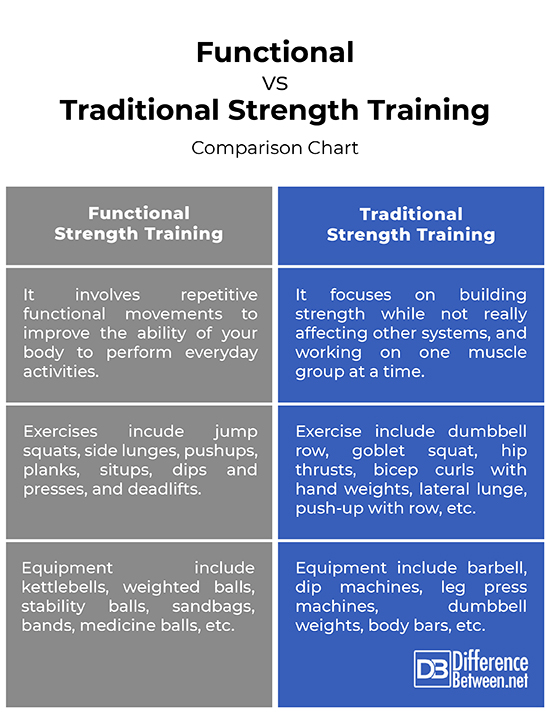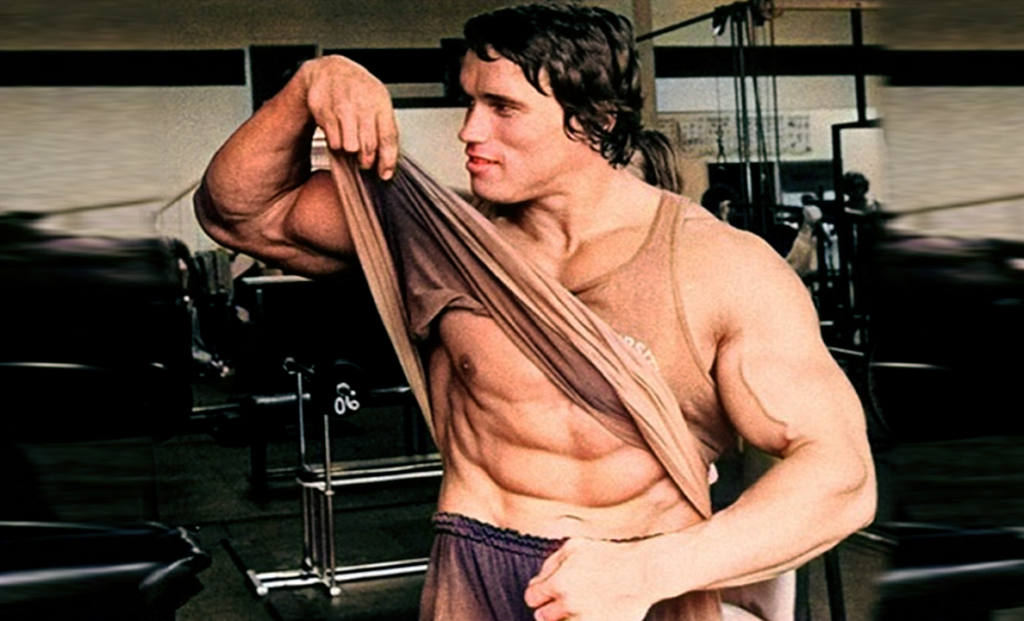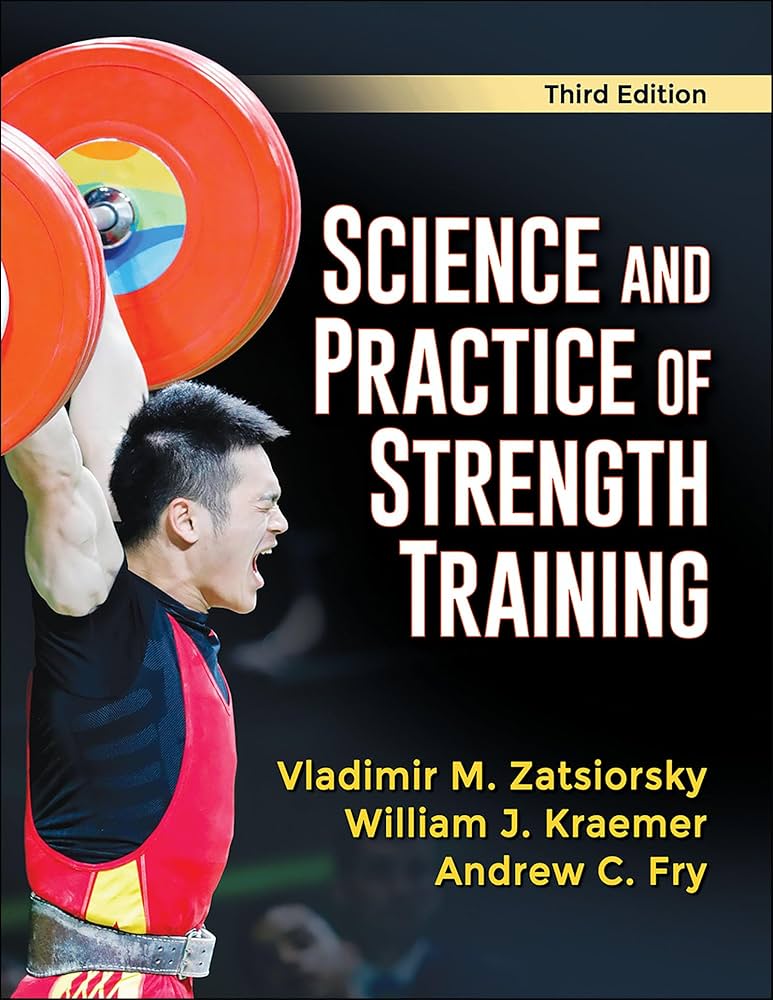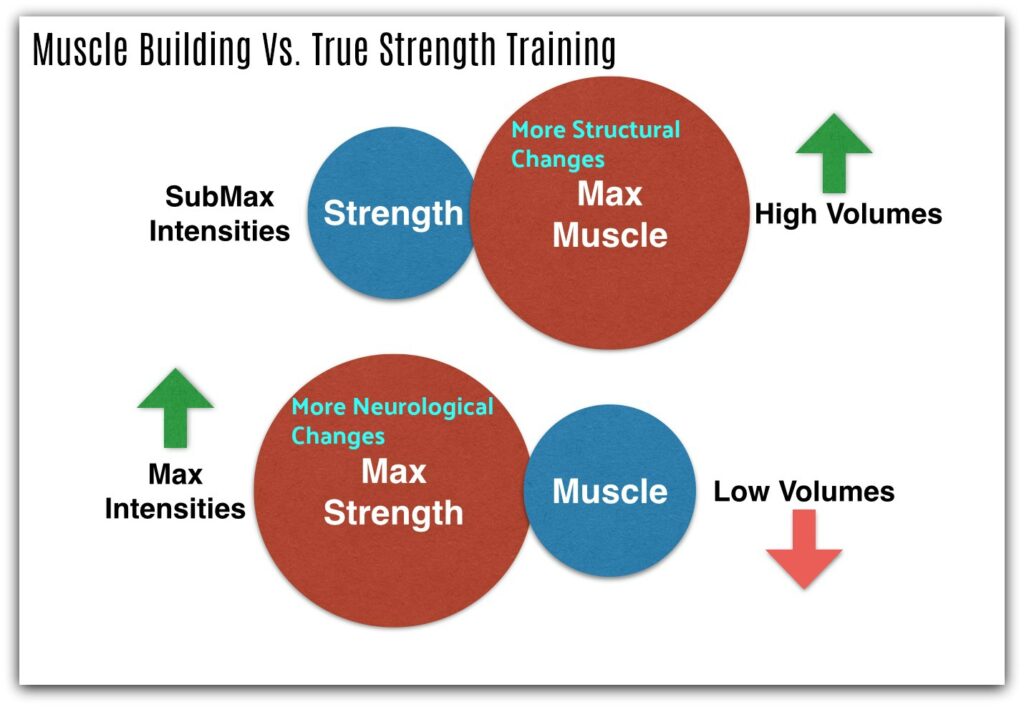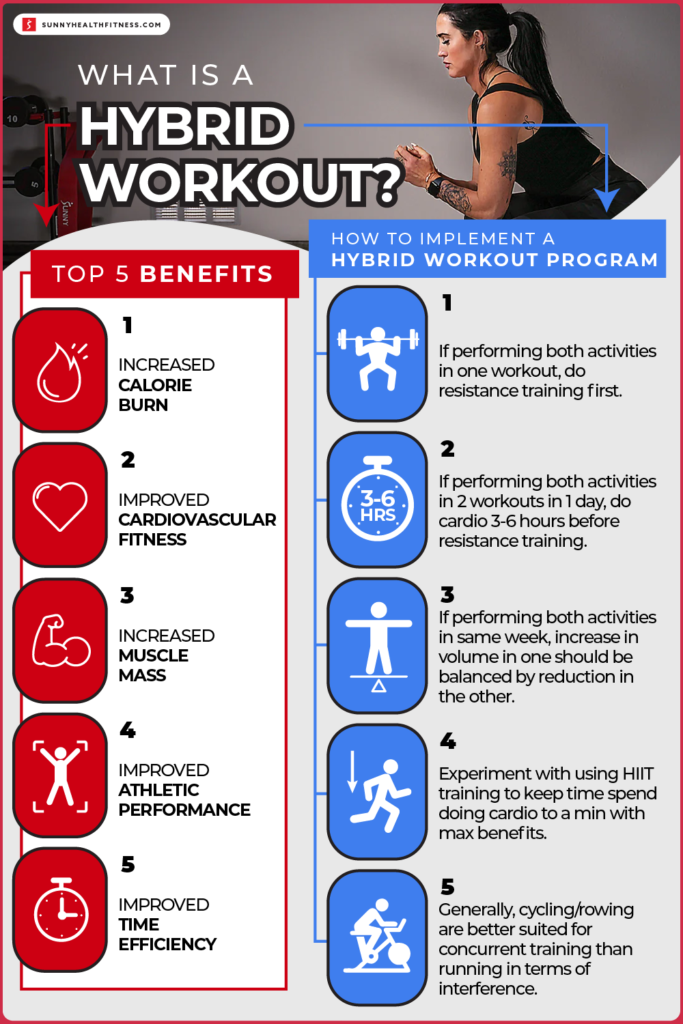Functional strength training focuses on improving daily movement patterns, while traditional strength training aims to increase muscle mass and strength. Both methods have unique benefits and can be tailored to individual goals.
Functional strength training enhances your ability to perform everyday activities by mimicking real-life movements. It often involves multi-joint exercises that improve balance, coordination, and flexibility. Traditional strength training, on the other hand, primarily targets muscle hypertrophy and strength gains through isolated exercises.
This method typically uses machines, free weights, and structured sets and reps. Understanding the differences between these two approaches can help you choose the right training method to meet your fitness goals. Both types of training can complement each other for a well-rounded fitness regimen.

Credit: m.facebook.com
Defining Functional Strength
Functional movements mimic everyday actions. They help you move better in daily life. Examples include squats and lunges. These exercises use multiple muscle groups. This makes them efficient. They also improve balance and coordination. Functional training enhances your body’s natural movements.
Functional strength training aids in daily tasks. Lifting groceries becomes easier. Playing with kids feels less tiring. It prepares your body for real-life activities. You will notice improved stamina and strength. This type of training focuses on practical benefits. It makes everyday life more manageable and enjoyable.
Exploring Traditional Strength
Traditional strength training often uses gym machines. These machines help with controlled movements. Dumbbells and barbells are also common tools. People use these to target specific muscles. Many gyms have a variety of equipment for different exercises. This type of training is usually done indoors.
Traditional strength training focuses on muscle isolation. This means working on one muscle group at a time. For example, a leg press machine targets the legs. A bench press targets the chest. This helps in building strength and muscle mass. The goal is often to increase muscle size and definition.
Key Distinctions
Functional strength training focuses on natural movements. These mimic daily activities like lifting groceries or climbing stairs. Traditional strength training often uses isolated exercises. Examples include bicep curls and leg presses. Functional training improves overall coordination and balance. Traditional methods target specific muscle groups for size and strength.
Functional training aims to enhance real-life performance. It helps in everyday tasks and sports. Traditional strength training often seeks to increase muscle mass and power. Functional exercises usually involve multiple muscles. Traditional routines may focus on one muscle group at a time. Both methods can improve fitness but have different focuses.
Benefits Of Functional Training
Functional training helps to strengthen core muscles. Strong core muscles support the spine. This reduces the risk of back injuries. Balance is also improved. Better balance leads to fewer falls. These exercises mimic real-life movements. They prepare the body for daily activities. This training is a great way to stay safe and healthy.
Functional training enhances flexibility. Flexible muscles and joints move more easily. This training also increases range of motion. You can move your limbs in a wider arc. Performing daily tasks becomes easier. Sports performance is also improved. This training keeps the body agile and ready for action.
Advantages Of Traditional Strength Training
Traditional strength training offers the benefit of targeting specific muscle groups, resulting in increased muscle mass and strength. It provides a structured approach, making it easier to measure progress and achieve consistent results.
Muscle Growth
Traditional strength training helps build larger muscles. Lifting heavy weights increases muscle size. This type of training is great for bodybuilding. It focuses on isolating muscles for growth. Many people use machines and free weights. This helps in targeting specific muscle groups.
Strength Metrics
Traditional strength training helps improve strength metrics. Athletes can lift heavier weights over time. This type of training uses repetition and sets. It helps track progress easily. People can see how much weight they can lift. This motivates them to train harder. Tracking strength gains is simple with traditional methods.

Credit: www.youtube.com
Combining Both For Optimal Results
Functional strength training improves everyday movements. Traditional strength training builds muscle mass. Combining both offers the best results. You need a balanced routine. This routine should include exercises from both methods. This helps in improving overall fitness.
Functional exercises mimic daily activities. Traditional exercises focus on specific muscles. For example, squats help in sitting and standing. Bicep curls build arm muscles. Mixing these exercises ensures a well-rounded fitness plan.
Periodization helps in planning workouts. It involves dividing training into phases. Each phase has a different focus. For instance, one phase might focus on strength. Another phase might focus on endurance. This helps in avoiding plateaus and overtraining.
There are different types of periodization. Linear periodization is the simplest. It gradually increases the intensity. Non-linear periodization varies the intensity. Both methods can be effective. Choose the one that suits your goals.
Workout Examples
Functional exercises aim to mimic daily movements. These movements improve overall strength and stability. Examples include squats, lunges, and push-ups. These exercises use multiple muscle groups. They enhance coordination and balance. Functional training focuses on real-world activities. This helps prevent injuries in everyday life. It is important for overall fitness.
Traditional lifts focus on building mass and strength. Common exercises are bench press, deadlifts, and bicep curls. These exercises often use heavy weights. They isolate specific muscles. This type of training is great for muscle growth. Traditional lifts improve maximum strength. They are popular in bodybuilding and powerlifting.
Tailoring Your Training To Your Goals
Each person has different fitness goals. Some want to build muscle, others seek better movement. Functional training helps in daily activities. Traditional strength training focuses on muscle growth. Knowing your goals helps in choosing the right method. Consult a trainer for personalized advice.
Tracking progress keeps you motivated. Use a fitness journal to note down achievements. Apps can also help track progress. Set short-term and long-term goals. Celebrate small wins to stay motivated. Regular updates help in making necessary adjustments.
Common Misconceptions
Many people think functional training is only for athletes. This is not true. Everyone can benefit from functional training. It helps in daily activities like lifting groceries or climbing stairs.
Traditional strength training focuses on building bigger muscles. People often do this for a more aesthetic look. This type of training uses machines and targets specific muscles.
There is no one-size-fits-all approach in strength training. What works for one person may not work for another. People have different goals and bodies. It is important to choose the right training for your needs.
Functional training often includes compound movements. These movements work multiple muscles at once. Traditional training might focus on isolating single muscles.
Nutrition’s Role In Strength Training
Functional fitness needs a diet rich in whole foods. Fresh vegetables, fruits, lean proteins, and healthy fats are key. Complex carbohydrates give energy for workouts. Hydration is also very important. Water helps muscles recover faster. Small, frequent meals keep energy levels stable. Protein helps in muscle repair and growth. Healthy fats support joint health. Balanced nutrition supports overall performance.
Traditional bodybuilding focuses on macronutrient ratios. High protein intake is essential for muscle growth. Carbohydrates are important for energy. Fats are needed in moderate amounts. Many bodybuilders eat six small meals a day. This approach maintains steady energy levels. Supplements like whey protein and BCAAs are common. Hydration remains a key factor. Proper nutrition ensures optimal muscle gain.
Incorporating Recovery
Functional strength training focuses on improving everyday movements, while traditional strength training targets specific muscle groups. Incorporating recovery in both methods enhances performance and prevents injuries.
Importance Of Rest
Rest is vital for muscle growth and repair. Muscles need time to recover after intense workouts. Without rest, the risk of injury increases. Proper rest helps the body rebuild stronger muscles. Both mental and physical health benefit from adequate rest periods. Sleep is a crucial part of the recovery process. Quality sleep enhances muscle recovery and overall performance.
Active Recovery Techniques
Active recovery involves low-intensity exercises. Examples include walking, swimming, or yoga. These activities promote blood flow and help muscles recover faster. Stretching is another effective technique. It improves flexibility and reduces muscle stiffness. Foam rolling can also aid in muscle recovery. It helps release muscle knots and improve circulation. Light activities keep the body moving without causing stress. Active recovery is essential for maintaining fitness levels. It also reduces the risk of burnout and overtraining.

Credit: www.youtube.com
Future Of Strength Training
Virtual reality is making workouts more exciting. People enjoy training in fun worlds. Wearable tech tracks progress and helps improve performance. Smart gyms offer personalized training plans. These gyms use advanced machines and apps. Group workouts are becoming popular. Friends motivate each other during sessions. Recovery techniques are also evolving. Tools like foam rollers and massage guns speed up recovery.
Researchers are studying the best ways to build strength. High-intensity interval training (HIIT) is effective. It mixes short bursts of activity with rest. Strength training now includes more compound exercises. These work multiple muscle groups at once. Nutrition is important too. Eating the right foods helps muscles grow. Rest days are also crucial. Muscles need time to repair and grow. Combining these methods leads to better results.
Frequently Asked Questions
What Is The Difference Between Functional And Traditional Strength Training On Apple Watch?
Functional strength training on Apple Watch focuses on multi-joint movements. Traditional strength training targets isolated muscle groups. Both track heart rate and calories.
What Is The Difference Between Functional Strength And Traditional Strength?
Functional strength focuses on improving everyday movements and overall stability. Traditional strength targets specific muscles for increased size and power.
Is Body Pump Traditional Or Functional Strength Training?
Body Pump combines elements of both traditional and functional strength training. It uses weights for muscle conditioning.
Can You Build Muscle Functional Training?
Yes, functional training can build muscle. It uses compound movements to strengthen multiple muscle groups simultaneously.
What Is Functional Strength Training?
Functional strength training focuses on exercises that mimic everyday activities, improving overall movement and muscle coordination.
What Is Traditional Strength Training?
Traditional strength training involves weightlifting exercises targeting specific muscle groups, often using machines or free weights.
Which Is Better For Overall Fitness?
Functional strength training is better for overall fitness as it enhances daily movements and overall muscle coordination.
Can I Combine Both Training Types?
Yes, combining both can provide comprehensive benefits, improving muscle strength and functional movement simultaneously.
What Are Examples Of Functional Exercises?
Examples include squats, lunges, push-ups, and kettlebell swings, all mimicking daily activities and improving balance.
What Are Examples Of Traditional Exercises?
Examples include bench presses, bicep curls, leg presses, and deadlifts, focusing on specific muscle groups.
Conclusion
Choosing between functional and traditional strength training depends on your goals. Functional training improves daily activities and movement efficiency. Traditional strength training builds muscle mass and strength. Both methods offer unique benefits. Consider your fitness objectives to decide which approach suits you best.
Balance both for optimal health and performance.

